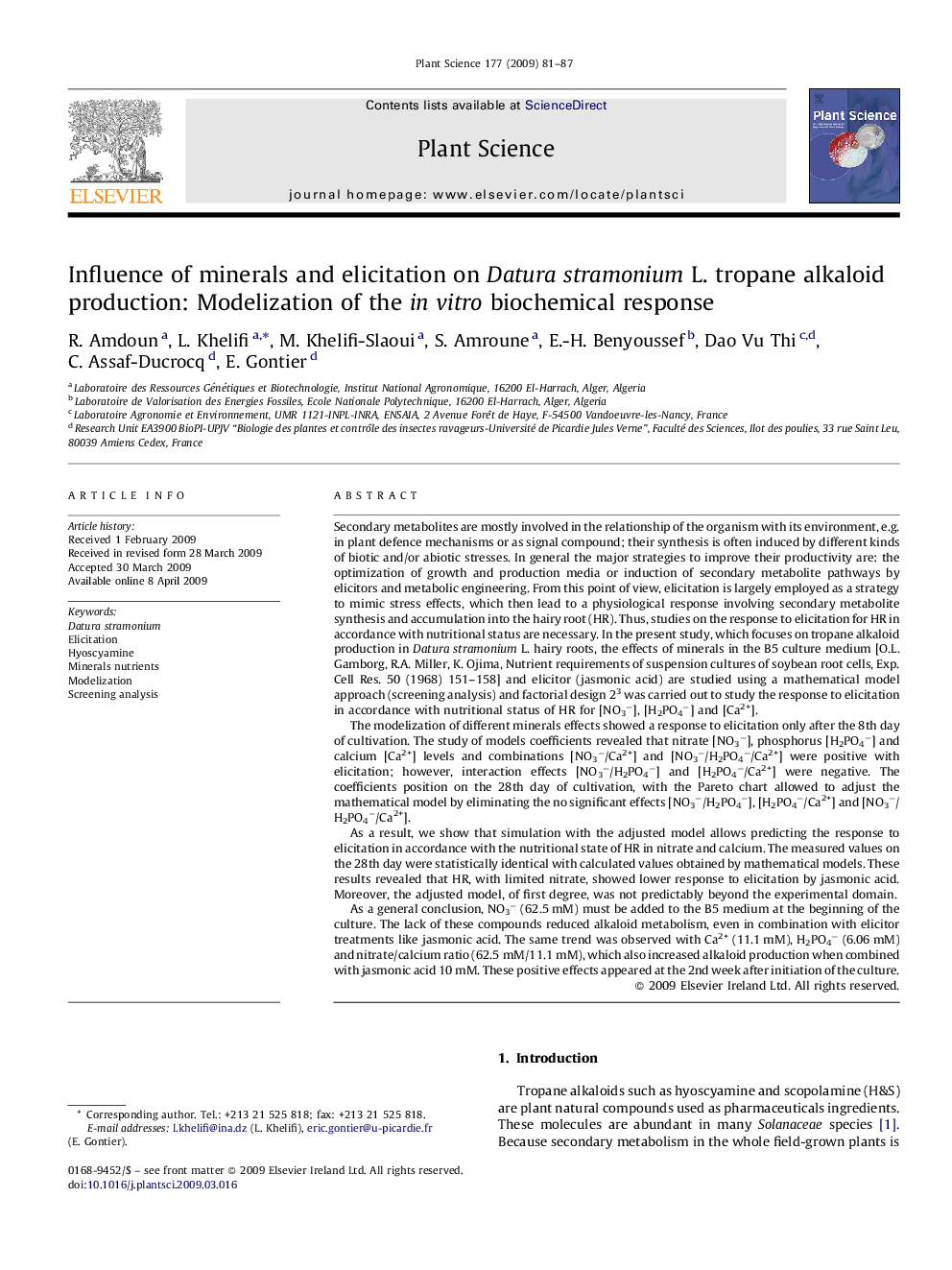| کد مقاله | کد نشریه | سال انتشار | مقاله انگلیسی | نسخه تمام متن |
|---|---|---|---|---|
| 2018122 | 1067836 | 2009 | 7 صفحه PDF | دانلود رایگان |

Secondary metabolites are mostly involved in the relationship of the organism with its environment, e.g. in plant defence mechanisms or as signal compound; their synthesis is often induced by different kinds of biotic and/or abiotic stresses. In general the major strategies to improve their productivity are: the optimization of growth and production media or induction of secondary metabolite pathways by elicitors and metabolic engineering. From this point of view, elicitation is largely employed as a strategy to mimic stress effects, which then lead to a physiological response involving secondary metabolite synthesis and accumulation into the hairy root (HR). Thus, studies on the response to elicitation for HR in accordance with nutritional status are necessary. In the present study, which focuses on tropane alkaloid production in Datura stramonium L. hairy roots, the effects of minerals in the B5 culture medium [O.L. Gamborg, R.A. Miller, K. Ojima, Nutrient requirements of suspension cultures of soybean root cells, Exp. Cell Res. 50 (1968) 151–158] and elicitor (jasmonic acid) are studied using a mathematical model approach (screening analysis) and factorial design 23 was carried out to study the response to elicitation in accordance with nutritional status of HR for [NO3−], [H2PO4−] and [Ca2+].The modelization of different minerals effects showed a response to elicitation only after the 8th day of cultivation. The study of models coefficients revealed that nitrate [NO3−], phosphorus [H2PO4−] and calcium [Ca2+] levels and combinations [NO3−/Ca2+] and [NO3−/H2PO4−/Ca2+] were positive with elicitation; however, interaction effects [NO3−/H2PO4−] and [H2PO4−/Ca2+] were negative. The coefficients position on the 28th day of cultivation, with the Pareto chart allowed to adjust the mathematical model by eliminating the no significant effects [NO3−/H2PO4−], [H2PO4−/Ca2+] and [NO3−/H2PO4−/Ca2+].As a result, we show that simulation with the adjusted model allows predicting the response to elicitation in accordance with the nutritional state of HR in nitrate and calcium. The measured values on the 28th day were statistically identical with calculated values obtained by mathematical models. These results revealed that HR, with limited nitrate, showed lower response to elicitation by jasmonic acid. Moreover, the adjusted model, of first degree, was not predictably beyond the experimental domain.As a general conclusion, NO3− (62.5 mM) must be added to the B5 medium at the beginning of the culture. The lack of these compounds reduced alkaloid metabolism, even in combination with elicitor treatments like jasmonic acid. The same trend was observed with Ca2+ (11.1 mM), H2PO4− (6.06 mM) and nitrate/calcium ratio (62.5 mM/11.1 mM), which also increased alkaloid production when combined with jasmonic acid 10 mM. These positive effects appeared at the 2nd week after initiation of the culture.
Journal: Plant Science - Volume 177, Issue 2, August 2009, Pages 81–87